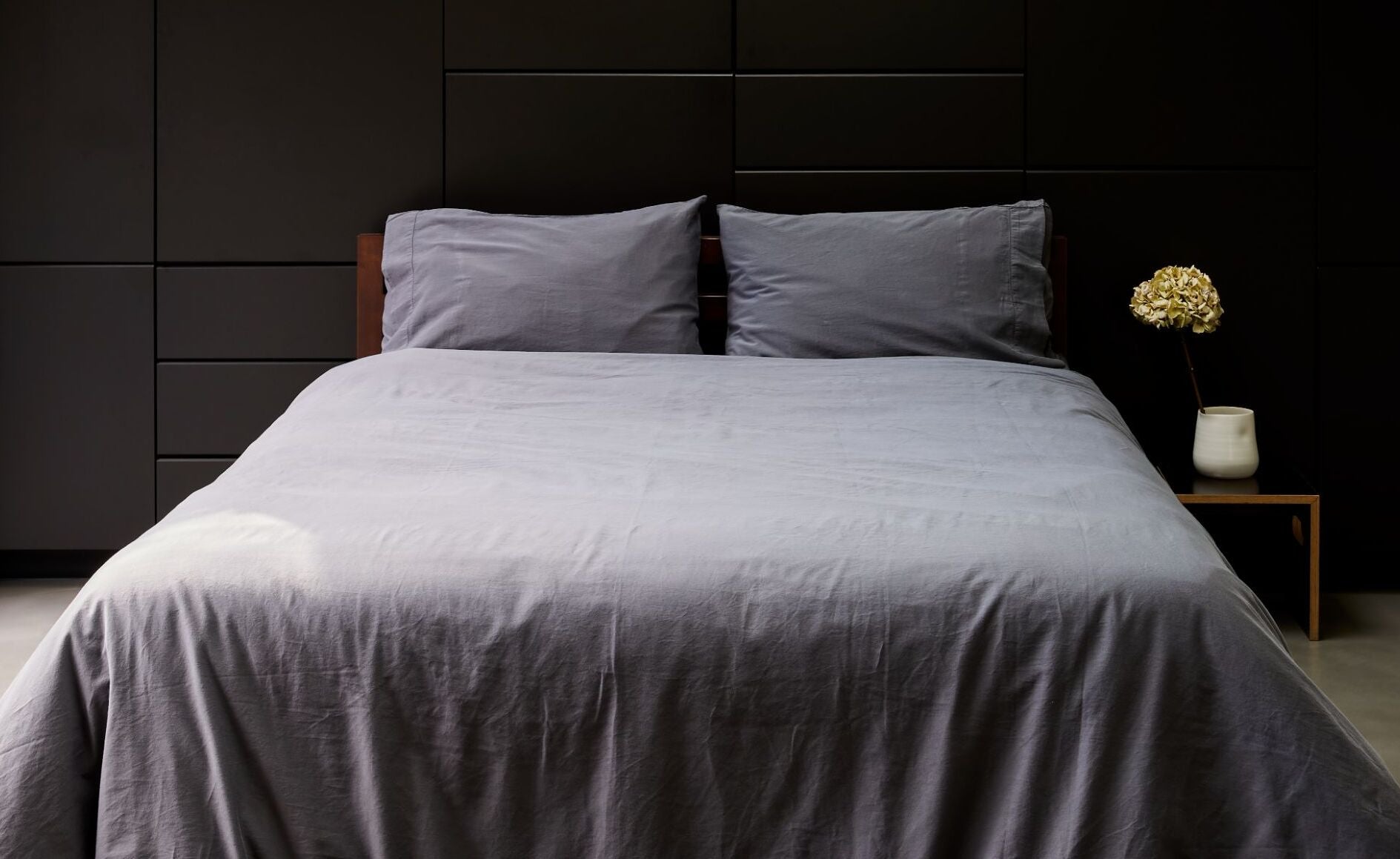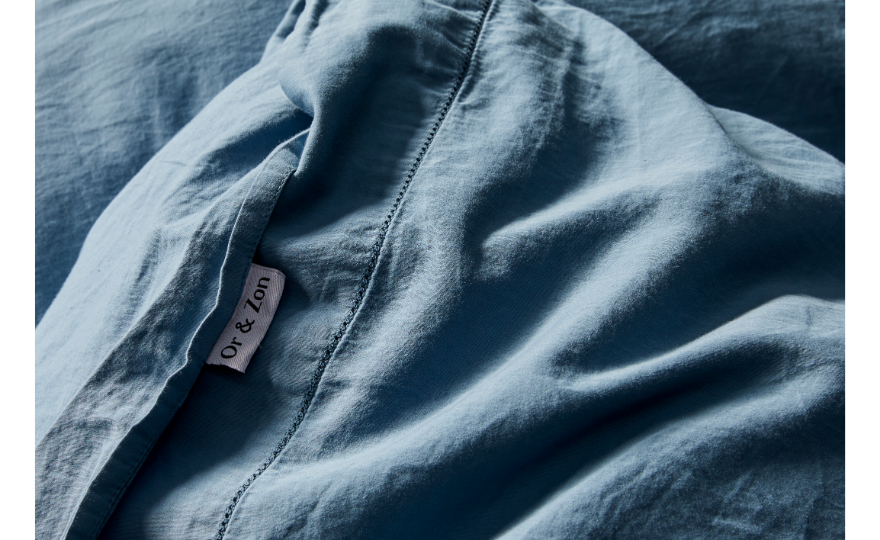365-DAY GUARANTEE | FREE SHIPPING | FREE RETURNS
365-DAY GUARANTEE | FREE SHIPPING | FREE RETURNS
365-DAY GUARANTEE | FREE SHIPPING | FREE RETURNS
The bedding you use has an impact not just on you and your quality of sleep and your health, but also on the environment as a whole. When it comes to deciding between organic and non-organic textiles, which is better and why? This guide is here to help you learn more about the benefits of organic cotton bedding and other sustainable textiles. You’ll also learn more about the differences between organic cotton and other sustainable fabrics like hemp, linen, and more. Read on to discover the perks of choosing an eco-friendly solution for your bedding.
The source of organic and sustainable textiles varies, but most organic cotton is grown in a variety of subtropical countries including Turkey, China, and India. Other sustainable textiles may be grown from cotton in the United States.


All organic materials come from non-genetically modified seeds and are grown without using any toxic chemicals like synthetic pesticides and fertilizers. Approximately 50 percent of organic cotton farming takes place in India, while the United States only accounts for approximately three percent of all organic cotton production.


So, what is organic cotton, and what are the benefits it provides? Organic cotton clothing and bedding is better for the environment than conventional cotton and the manufacturing process always undergoes stringent safety standards. From the growing stages to harvesting and production, it follows a very specific global organic textile standard that makes it far superior, safer, and better for the environment overall.
Wearing organic cotton clothing and using organic cotton bedding supports organic farmers while also supporting a cleaner, greener world. Let’s look more closely at some of the benefits of choosing this eco-friendly material.

What is the importance of organic or eco-friendly fabric? Well, now that you know more about why organic and sustainable fabric is environmentally friendly and better for the planet than traditional cotton, let’s look at a few reasons why this material is better for human health in general.
While organic cotton is one of the most sustainable fabrics available on the market, there are a few other textiles that are also good for the planet and your health. Let’s compare a few options so you can determine whether organic cotton is better.
Hemp fabric is another textile that is considered one of the most sustainable available. That’s because hemp only requires between 300 and 500 liters of water to grow one kilogram, which is far less water consumption that cotton requires. Therefore, growing and cultivating hemp also helps to conserve natural resources, and it also doesn’t need pesticides or fertilizers to become a healthy, thriving plant. Hemp fabric is lightweight and breathable, but it’s not quite as soft to the touch as organic cotton. However, hemp does dry faster than cotton and offers a layer of UV protection, making it a good choice for clothing products.
In terms of longevity, hemp lasts longer than cotton and is more sustainable as a plant. Hemp grows much faster than cotton and requires less of the world’s cultivated land to yield more product. It also regenerates the soil and is carbon negative. Hemp also absorbs more carbon dioxide than forests, so it’s a natural filter that helps to clean the air. However, since hemp isn’t as soft as organic cotton, it’s not used to make products like bedding as often as cotton is.
The organic fibers of linen come from the flax plant and it’s similar to hemp and organic cotton because it doesn’t require a large volume of water to grow. Linen is also grown and produced without the need for chemicals. This textile features shorter fibers that make it extremely lightweight and breathable, but also a bit less durable than both hemp and cotton. You’ll find linen used to make a variety of products, including high-quality clothing, household goods like bedding and curtains, and more.
Pima cotton is similar to Egyptian cotton grown from the Gossypium barbadense or “sea island cotton” plant. The longer fibers make Pima cotton soft and silky, and it’s also a much more durable and wrinkle-resistant fabric than traditional cotton. Pima cotton is also resistant to tears and fraying, so it should last longer than some other bedding textiles. However, Pima cotton is not organically farmed, but it’s still known as one of the world’s best and finest forms of cotton.
Some brands use the term “Supima” to describe Pima cotton, which is technically a legal trademark awarded by a non-profit called the Supima organization. In order to bear the Supima label, Pima cotton must be 100 percent pure and grown inside of the United States. However, Pima cotton in general is not necessarily much more unique than standard, non-organic cotton. It’s also not considered an organic product, which means that some use of chemicals may be involved during production and manufacturing.
The term semi-synthetic refers to specific cellulose fibers manufactured by dissolving plant cellulose and turning it into fabric. This encompasses a variety of vegan textiles like cupro, lyocell, bamboo, and modal fabric. These trending fabrics are silkier than cotton, which cotton tends to be plusher to the touch. They also require minimal water to grow and process, much like organically grown cotton. Bamboo plants used to make bamboo fabric and eucalyptus plants used to make lyocell don’t need much water, making this option a somewhat sustainable option.
Many semi-synthetic fabrics are made using a closed-loop water recycling system that does conserve water, but it also wastes water, too. The process to make these fabrics requires the use of chemicals to break the plant pulp down before it can be processed. This makes organic cotton the better choice if you’re looking for textiles that are made completely chemical-free. Plants used to make semi-synthetic fabrics are typically a bit more environmentally friendly than completely synthetic fabrics, but they’re not quite as safe or healthy as pure organic cotton fabric.

Knowing what to look for when you’re seeking organic cotton products is crucial to ensure that you’re receiving the safest and most organic product possible. There are various certifications that indicate whether a product is made of organic materials and that it’s crafted via organic, sustainable processes. GOTS certified cotton is one of the most reliable certifications and verifies that the cotton is grown without GMOs or chemicals and that it can be traced from the actual cotton fields to the customer through each step of the manufacturing process. GOTS also checks for reasonable, controlled water management and field irrigation and ensures that farming families and employees follow working conditions per various regulatory bodies.
The Better Cotton Initiative is another certification to look for. This non-profit governance group ensures better standards in growing organic cotton and cotton farming practices across 21 different countries. The organization accounts for an impressive 14 percent of global cotton output worldwide. In just over 10 years, the organization has become the world's largest cotton sustainability program. The Textile Exchange is a global non-profit working to drive positive action on climate change amongst the textile, fashion, and apparel industries. The organization supports a growing number of brands, retailers, farmers, and more who work together toward more purposeful supply chain production.
Whether it’s for a more sustainable environment for future generations or a healthier environment at home that you’re looking for, choosing organic and sustainable textiles is a smart way to help yourself and the planet. Look for our range of organic, hypoallergenic bedding products all made from natural, organic materials line lightweight linen and supremely soft cotton. At Or & Zon, we care about the environment and the customer experience. That’s why we’re proud to offer exceptional, organic textiles designed to improve your health and your life. Explore our website today to discover the perfect set of sheets, duvet covers, and much more to help make your bedroom a healthy and beautiful place to be.
